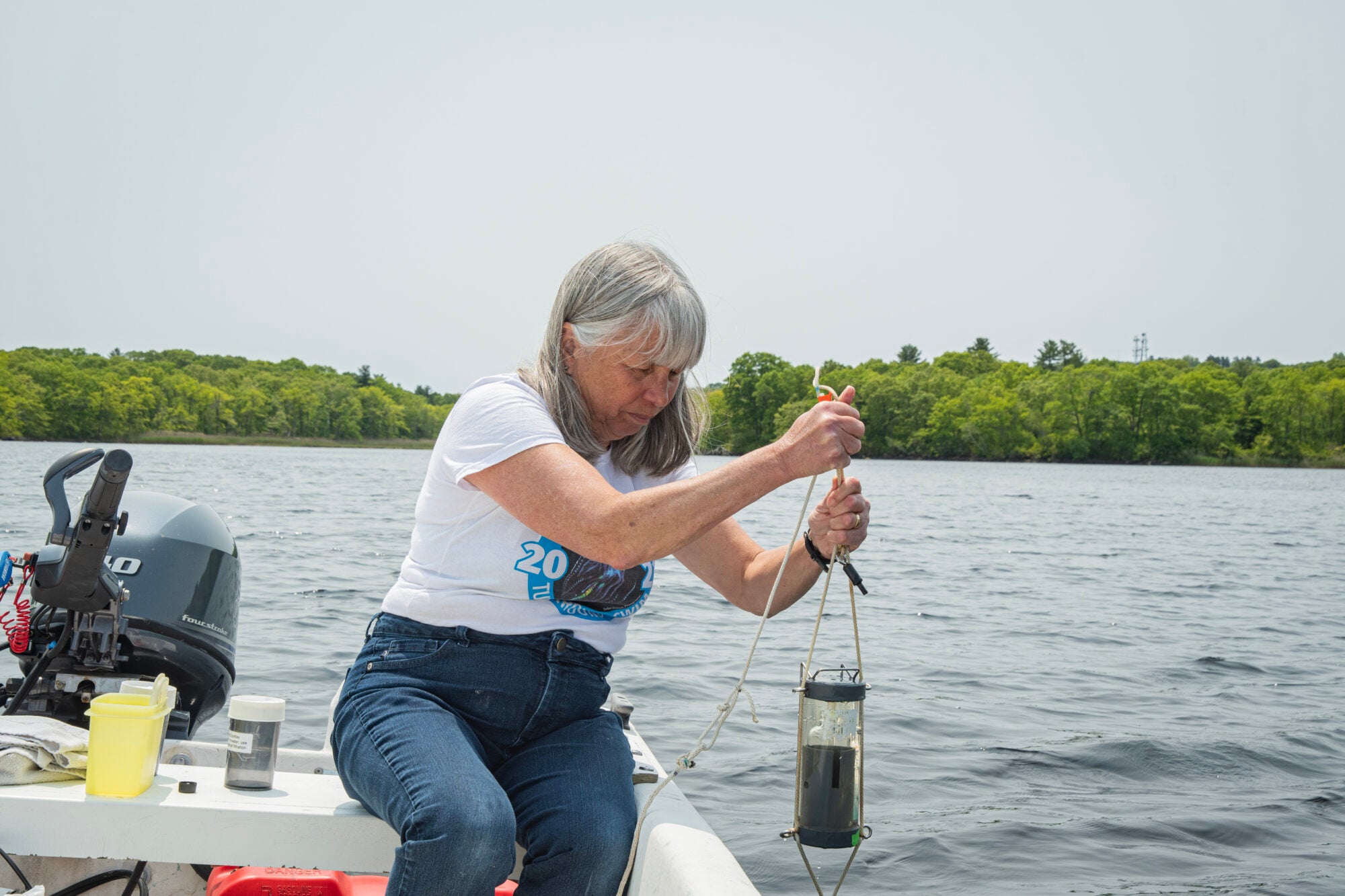Program seeks volunteers to monitor ponds, streams, coast
In 2022, it was the summer’s intense heat that affected water quality in ponds, lakes, rivers and streams throughout Rhode Island, as well at sites in Connecticut, Massachusetts and New York.
In fact, the National Oceanic and Atmospheric
Administration said 2023 brought the Northeast its 17th wettest year since 1895. Last year was Rhode
Island’s ninth wettest year.
“We saw the effects of greater precipitation throughout
the year across the state. Bacteria counts were higher in many of our rivers
and ponds, as well as coastal waters,” said Elizabeth Herron, director of URI’s
Watershed Watch program.
The “we” in Herron’s comment refers to the hundreds of
volunteers who monitor and test bodies of water across Rhode Island, as well as
parts of Connecticut, Massachusetts and New York. The program, which is in its
37th year, is again seeking volunteers for 2024.
Not only do volunteers take water samples and bring them to Herron’s lab at URI for analysis, they observe changes in the waterways and along their banks.
“Last year, some of our volunteers saw something new at
Indian Lake and Worden Pond in South Kingstown and Mishnock Lake in West
Greenwich—blooms of an invasive plant species called hydrilla,” Herron said.
“At Indian Lake, the information about the invasive bloom galvanized people who
live along the lake to pull together and discuss solutions.”
Toxic blue green algae, or Aetokthonos hydrillicola,
thrive in habitats where hydrilla are present. Hydrilla forms dense mats at the
water’s surface, changes pH, removes oxygen, restricts native plant growth,
blocks nutrients for aquatic animals, and hinders irrigation, recreation and
water flow. Identifying infestations early can help with control efforts.
“We had hoped since hydrilla comes from warmer climates
in Asia, Europe and Africa, that it would not survive our colder winters,”
Herron said. “But because it doesn’t have any local predators, no insects to
eat them, they do really well. The invasion of hydrilla could be a symptom of
our warming planet.”
Herron said because the monitors are stewards of our
bodies of water, they can keep an eye on things so local communities and
government agencies can take action.
Thanks to the Watershed Watch program, much more is known
today about how land use, seasonal weather patterns, climate change and other
factors affect local waters in good and bad ways. The program, one of the
longest running citizen-science projects in Rhode Island, is now seeking
additional volunteers to conduct weekly or biweekly monitoring from May to
October.
Training for new Watershed Watch volunteers starts March
27 at 6 p.m. at the Coastal Institute in Kingston, and is repeated Saturday,
March 30, at 9 a.m. Video sessions will be available for those who can’t make
it or would rather not sit in a classroom with others. To learn more and to
register for training, check out https://web.uri.edu/watershedwatch/getting-involved/become-a-volunteer/.
Volunteers are matched to a specific site for which they
will responsible. Every week or two, typically on a day of their choice, they
monitor and test for a variety of water quality indicators. On several
designated dates, the volunteers collect water samples that are brought to
URI’s Kingston Campus to be analyzed for nutrients, acidity and bacteria.
Among the many water bodies needing volunteer monitors
are areas of the Roger Williams Park ponds in Providence, and Sand and Gorton
ponds in Warwick. The Warwick sites require a means to get out onto the water,
a canoe, kayak or other small boat. But many other sites don’t. Watershed Watch
will work with you to find a site that meets your needs if possible.
Many volunteers work in teams to share their monitoring
duties, which can also be an enjoyable family activity for parents and their
children, Herron said. Teens can use it to gain required community service
hours for high school graduation. Ponds, lakes and some saltwater sites are
monitored at their deepest point, so access to a boat, canoe or kayak is
necessary. But few river and stream sites need a boat. Other sites are
monitored from the shore or by wading.
Watershed Watch is sponsored by URI Cooperative Extension
in the College of the Environment and Life Sciences, the Rhode Island
Department of Environmental Management, and about 48 local organizations and
communities. Additional sponsors are always welcome.
For more information or to register for the training
sessions, contact Elizabeth Herron at 401-874-4552 or at eherron@uri.edu. Visit
the program’s website for detailed information about the program
and its list of 2024 monitoring locations.
